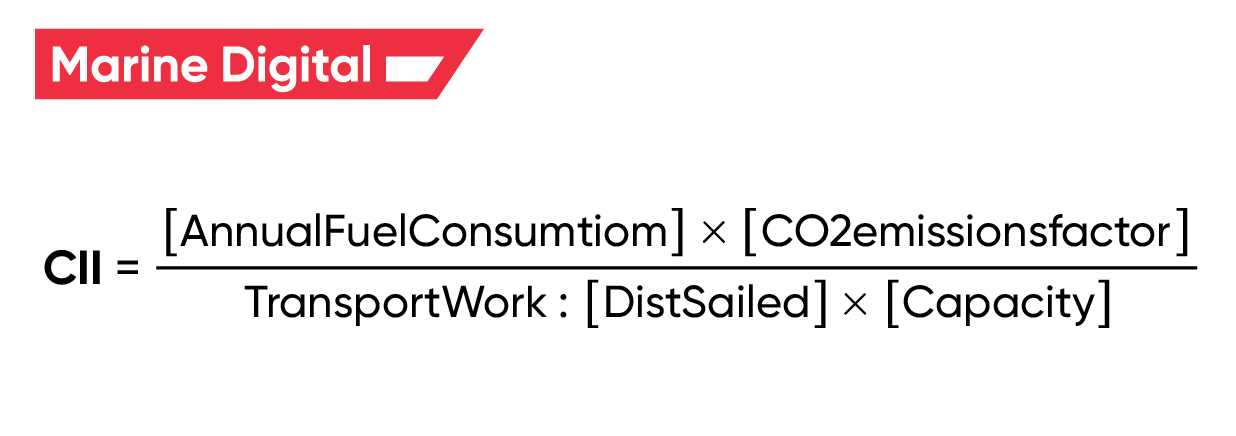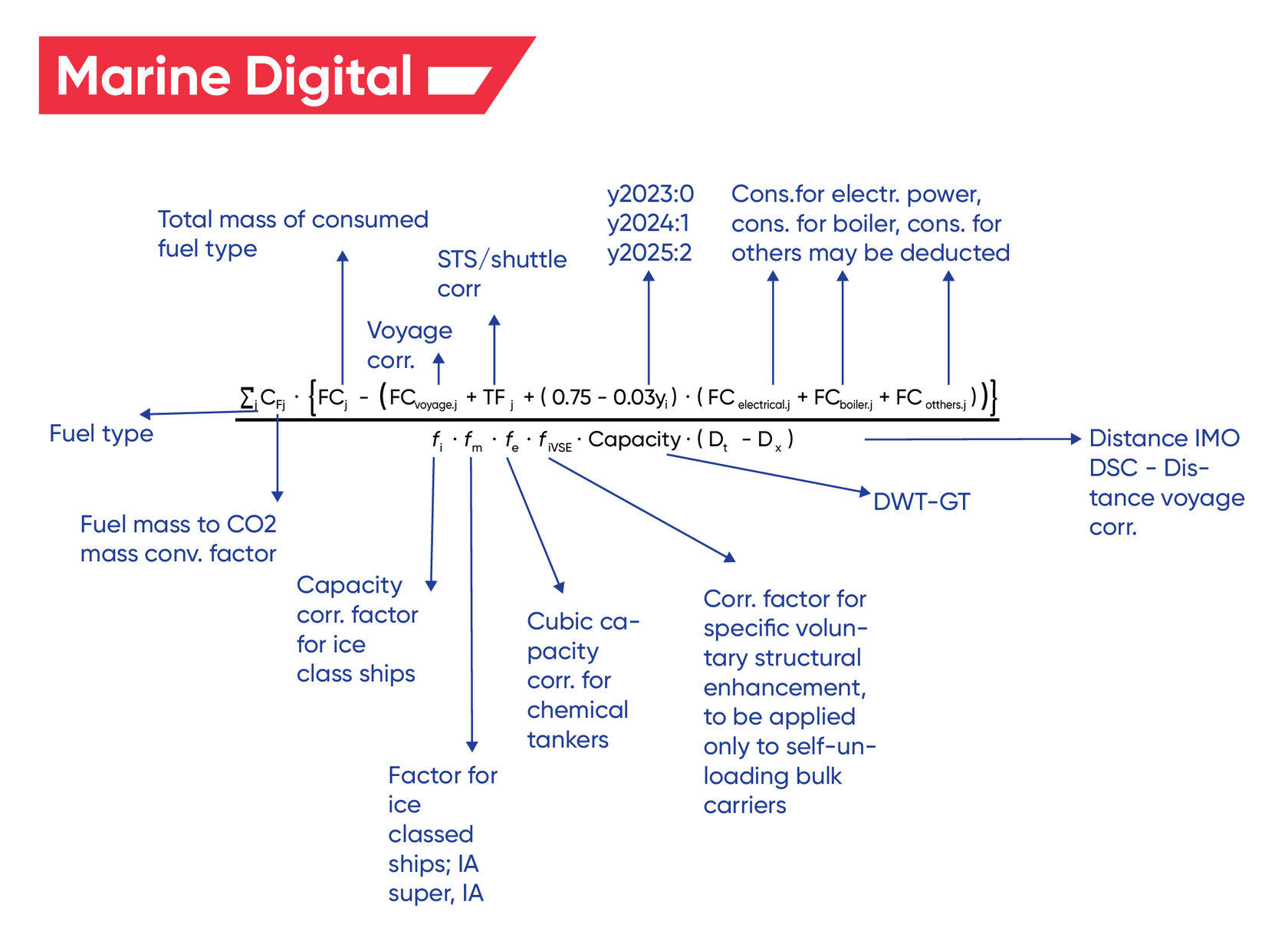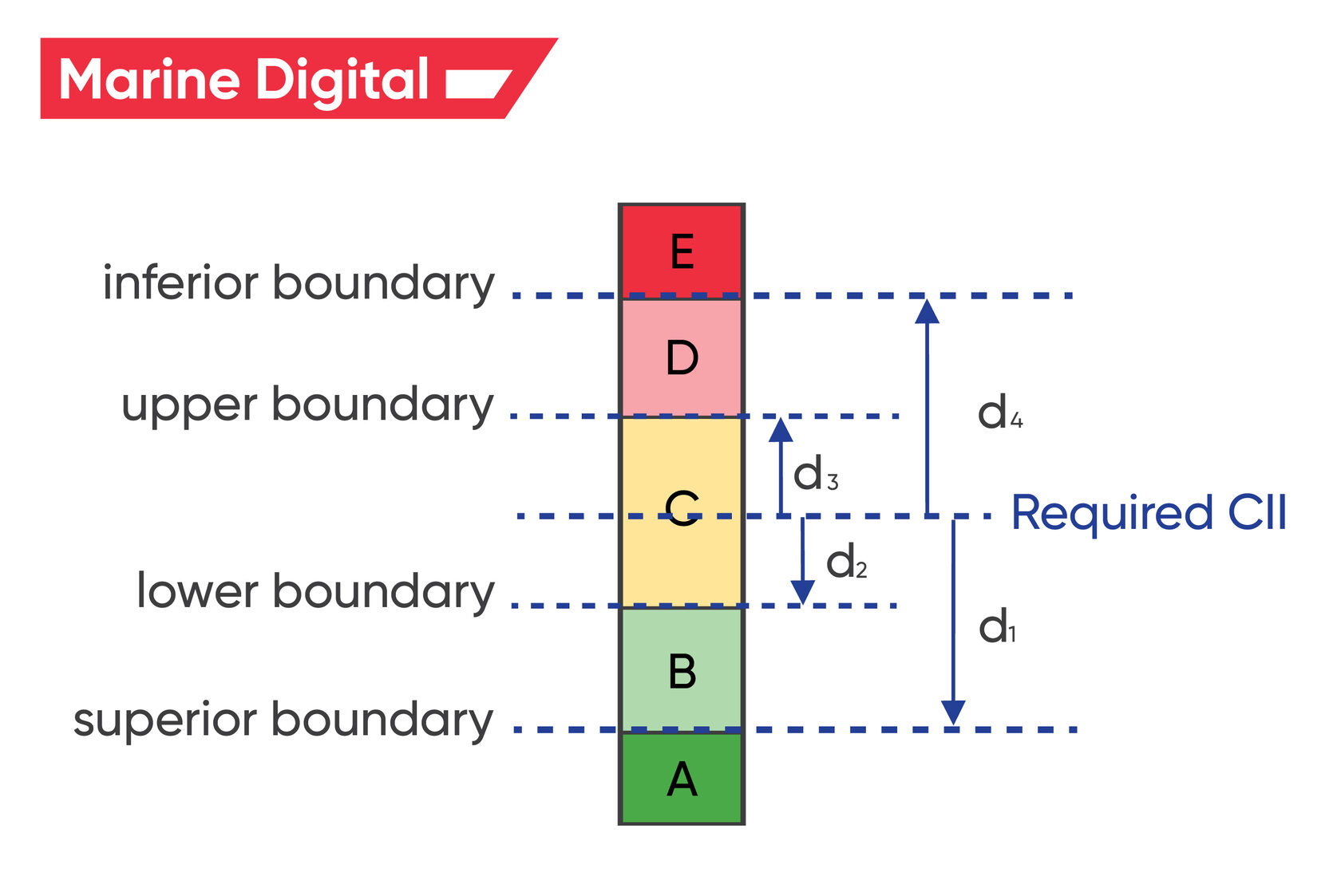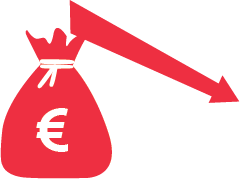Frequently Asked Questions about Carbon Intensity Indicator (CII FAQ)
New initiatives from IMO are already here starting from January 2023. A new wave of reduction of the carbon footprint of the shipping industry. How Carbon Intensity Index works and what do you need to know about CII?
IMO - the International Maritime Organization is a specialized agency of the United Nations which is responsible for measures to improve the safety and security of international shipping and to prevent pollution from ships. It is also involved in legal matters, including liability and compensation issues and the facilitation of international maritime traffic. It was established by means of a Convention adopted under the auspices of the United Nations in Geneva on 6 March 1948 and met for the first time in January 1959.
In January 2023 IMO implemented new initiatives to reduce the carbon footprint of the shipping industry. A new approach to reducing greenhouse gas (GHG) emissions will put additional pressure on all industry players and require vessels to report annually on their energy efficiency performance. The Carbon Intensity Indicator (CII), effective from January 2023, indicates the performance of a vessel. We prepared all the essential info that you need to know
In January 2023 IMO implemented new initiatives to reduce the carbon footprint of the shipping industry. A new approach to reducing greenhouse gas (GHG) emissions will put additional pressure on all industry players and require vessels to report annually on their energy efficiency performance. The Carbon Intensity Indicator (CII), effective from January 2023, indicates the performance of a vessel. We prepared all the essential info that you need to know
Answer: The Carbon Intensity Index (CII) measures the operational efficiency of a ship by determining its carbon emissions (in grams of CO2 per payload per nautical mile traveled). This index is required for cargo ships, RoPax vessels, and cruise ships over 5,000 gross tons.
Question: What does the CII (Carbon intensity index) of a vessel mean?
Question: How to calculate the Carbon intensity index (CII)?
Answer: The CII is based on the Annual Emissions Ratio (AER - emission per dwt-mile). The formula is simple: annual fuel consumption is multiplied by the CO2 emission factor and is divided by the transport work (distance traveled by ship multiplied by capacity). In addition, some correction factors can be applied to the above formula.
Answer: The CII is based on the Annual Emissions Ratio (AER - emission per dwt-mile). The formula is simple: annual fuel consumption is multiplied by the CO2 emission factor and is divided by the transport work (distance traveled by ship multiplied by capacity). In addition, some correction factors can be applied to the above formula.

Image: Calculation of CII including correction factors

There are also several correction factors for specific types of ships (see the image below). The amendments apply to ships with an ice-class, refrigerated cargo or cargo heating or cooling systems, or cargo handling systems. There are also additional exemptions, such as ship-to-ship freight shuttle tankers, chemical tankers, and improved structure bulk carriers.
Answer: CII should be reported annually but its calculation is ongoing, not a one-time event. The focus is on determining the expected CII value for a vessel by the end of the year and the necessary calculations to make this prediction.
Question: How often should CII be calculated and reported?

Question: What is a required Carbon intensity index?
Answer: Required CII is a grade level necessary to achieve by the end of every year starting from 2023. There are 5 levels of CII from A to E, required CII is a C level. Calculation of the level has a special methodology.
Answer: Required CII is a grade level necessary to achieve by the end of every year starting from 2023. There are 5 levels of CII from A to E, required CII is a C level. Calculation of the level has a special methodology.
Answer: A ship that receives a "D" rating for three consecutive years or an "E" rating for one year will be obligated to implement a corrective action plan as part of the Ship Performance Management Plan (SEEMP). This will impact the annual declaration of conformity for the vessel.
Question: What happens if a vessel receives a D/E rating?
Answer: To report CII, the following data is required: 1) all distances traveled, 2) all time at sea, and 3) all fuel consumption during the year. Additionally, information to correct fuel consumption for the calculation of CO2 emissions, such as the fuel consumption of cargo heating/cooling systems, must also be collected.
Question: What information will need to be provided when applying for a CII classification?
Answer: Operating speed has the greatest impact on CII due to the cubic relationship between speed and consumption. Tonnage is either the deadweight or gross tonnage of a vessel, depending on the type of vessel. Therefore, the capacitance is constant in the above formula. In addition, the IMO is currently discussing a list of exceptions and amendments to this calculation, which will be finalized before it enters into force in January 2023.
Question: What affects the Carbon intensity index most?
Answer: The CII rating, which ranges from A to E, is influenced by various factors such as speed and consumption, as well as trading patterns and the balance between travel time and waiting time at ports. An annual rating lower than "C" indicates non-compliance with environmental regulations and could become increasingly prevalent as the CII rating becomes more strict over time.
Question: How will the decision on the Charter affect the CII?
Answer: Speed is the biggest factor influencing emissions, and every node reduction results in significant savings. Thus, by optimizing the ship's speed and route to avoid long periods of anchorage waiting to berth, emissions reductions can be achieved.
Question: How can 'just-in-time' (JIT) impact CII?
Answer: The accounting for certain transactions and events has not been determined. The ship trading scheme can significantly impact the CII, with different outcomes for vessels that visit ports frequently versus those that spend more time at sea. For example, two sister ships may have different CII values and ratings depending on their voyage patterns. The ship that benefits more from the trading scheme will likely have the better CII.
Question: Will moorings and vessels laid up be excluded from the CII calculation?
Answer: The total fuel consumption of the ship during the year will include the time spent in the port. A ship typically consumes fuel while in port or idling, emitting CO2, but much less than when sailing. However, there are no transport operations during this time. Thus, the denominator of the CII formula does not increase only the numerator until allowable adjustments have been made.
Question: Will consumption in ports impact CII?
Answer: The IMO reduction targets for 2050 are based on data from 2019, but keep in mind that the CII regulation will only come into effect in 2023. The benchmark CII is calculated from 2019 data and reduction factors continually reduce the required annual operational CII. . These reduction factors have so far been determined until 2026 and may be further strengthened thereafter. The most important parameter for a vessel will be its CII rating.
Question: When modeling CII for future years, which year should be used as the base?
Answer: The easiest way to go is the CII calculator solution from Marine Digital, which allows fleet managers to assess the current state of CII, forecast the end-of-the-year state, and find optimization potential for the fleet.
Question: What digital tools support CII calculation and optimization?
CII calculator and forecast tool allow for simulation end-of-the-year state of the vessel carbon intensity of the vessel and analyze the impact of the speed reduction. Read more about Marine Digital CII calculator


TOP 5 factors contributing to lower fuel costs for Shipping companies
Get a presentation with a full description of the features and free pilot project with trial of Marine Digital FOS for 2 months
"Clicking the button, you consent to the processing of personal data and agree to the privacy policy"

Get an overview "The Pathway to Zero Carbon Shipping:
IMO Compliance and CII Optimization through SEEMP" on email and download it for FREE! Leave your email now!
"Clicking the button, you consent to the processing of personal data and agree to the privacy policy, as well as consent to subscribe to the newsletter. "
Аdvantage of Fuel Optimization System from Marine Digital:

Marine Digital FOS can be integrated with other system and third-party's solutions through the API. To implement vessel performance monitoring for any vessel, we are using mathematical algorithms, machine learning and the same equipment as in FOS. The more data we collect from vessels, the more precise reports and recommendations our system will perform according to your individual requirements in fleet management.
If you have any questions about the solutions and the Marine Digital System platform, write to us, we will be happy to answer
If you have any questions about the solutions and the Marine Digital System platform, write to us, we will be happy to answer

Increased business process speed

Reducing to zero the number of errors

Best offer to the clients

Reduction in operating expenses
Have a questions?





